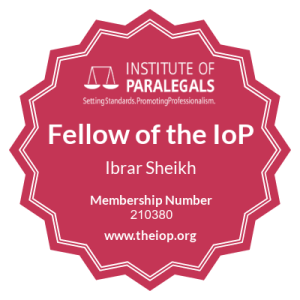The Children and Families Act 2014 will introduce significant changes into the law and procedure which will affect family court applications and the way in which cases are run. This guide is intended to give you basic details and guidance about changes in the following areas:
- Mediation
- The Parental Involvement Principle
- Child Arrangements Orders
- The Child Arrangements Programme
- Expert Evidence
1. Mediation
What does the law say?
Section 10 of the Children and Families Act now obliges the applicant in a relevant family application to attend a Family Mediation and Assessment Meeting (MIAM).
A relevant family application is an application made to initiate family proceedings, so that will chiefly involve applications for Child Arrangements Orders (which replace Contact and Residence Orders) and applications for financial remedy (ancillary relief).
Before making such an application – on Form C100 – you will need to have a completed Form F1 which will either record your attendance at a MIAM or the reasons why a MIAM is not appropriate in your case.
It is likely that the F1 form will soon be incorporated into a revised C100.
There are exceptions when you do not have to attend a MIAM, for example:
- The other party refuses to engage with the process;
- The mediator determines that the case is not suitable for mediation;
- Either party has made an allegation against the other of domestic violence.
Why has the Government done this?
The Government believes that disputes are much better resolved through mediation than through litigation in the courts.
Mediation is much less stressful for you, and much cheaper. There is good evidence that it results in stronger and longer-lasting agreements, and makes it less likely that you will return to court. It is much better for children if their parents can resolve differences between themselves – with some support – than for a judge to impose a legal solution.
What will it mean in practice?
Before you go to court now you will have to show that you have tried mediation and it hasn’t worked, or that the other party has refused to try mediation, or that your case is for some other reason not suited to mediation.
What should you do?
There are already signs that the process can be cheated. You can go to a mediator, claim that the other party won’t negotiate, and pay the mediator a fee (£25 seems to be typical) to sign off your F1 so you can go to court.
But why would you want to do this? Mediation is a much better option for the vast majority of couples than court, and much better for children.
We would advise that you cooperate fully with the spirit of this legislation and try to make mediation work for you. Court should only be a last resort after everything else has been tried.
Make the offer of mediation by letter or email and keep a copy for your records so that you have evidence you can later show a court that you have made the offer. Make this a stand-alone letter: do not include it in a letter about other matters. Never use texting (SMS) when communicating as you will not have a record.
2. The Presumption of Parental Involvement
What does the law say?
Section 11 of the Children and Families Act 2014 amends Section 1 of the Children Act 1989 by introducing a clause requiring the court to presume that involvement of a parent in the life of a child will further that child’s welfare.
The law makes the presumption “rebuttable” which means that it does not apply if a parent cannot be involved without putting the child at risk of suffering harm, or if evidence is presented to the court which suggests the parent’s involvement would put the child at risk of suffering harm.
The term “involvement” is not defined, but a late amendment to Section 11 specifies that it can be of any kind, either direct or indirect, but does not indicate any particular division of a child’s time.
Why has the Government done this?
The Government is aware that following family court proceedings many children end up with severely reduced contact, or only indirect contact, with one parent, and that this is not in a child’s best interests.
Many people – and especially fathers’ organisations – have campaigned for many years for a rebuttable presumption of equally shared parenting to be written into law. There has been an equally vocal campaign against this by those who believe such a presumption would conflict with the “best interests of the child” principle. The recent review of the family courts led by Sir David Norgrove first reported in favour and then against a presumption to be written into law.
The Government has tried to steer a middle way between these conflicting views.
What will it mean in practice?
It is unlikely that Section 11 will have much effect at all. For the Government the MP Edward Timpson said the clause was introduced merely to counter the perception that the courts are biased against fathers; the judge responsible for modernising the courts, Lord Justice Ryder, said it would not influence how judges conduct cases.
What should you do?
We would advise that you should be aware of this clause but not use it in your case.
We must emphasise that this is NOT a presumption of shared parenting and does NOT entitle you to equally shared time with your child or, indeed, to any division of time.
Wikivorce will monitor cases to determine whether this clause is having any impact on outcomes and report back in due course. If there are positive ways in which this clause can be used by litigants, we shall let you know!
3. Child Arrangements Orders
What does the law say?
Section 12 of the Children and Families Act 2014 amends Section 8 of the Children Act 1989 by removing all references to Contact and Residence Orders and replacing them with Child Arrangements Orders.
These are defined as orders regulating arrangements relating to:
- with whom a child is to live, spend time or otherwise have contact, and
- when a child is to live, spend time or otherwise have contact with any person.
Why has the Government done this?
The Government was aware that although Residence Orders were only supposed to regulate with whom a child was to live, they gave the impression of conferring superior status. Meanwhile, Contact Orders appeared to make “non-resident parents” subordinate to the “resident” parent who could then control and manipulate contact.
The new Child Arrangements Order is intended to remove these perceptions by combining the two old orders into one and focus parents’ attention more onto the needs of the child.
What will it mean in practice?
It is quite likely that the new order will have limited impact, and that the courts will continue to make Child Arrangements Orders which look like Residence Orders and Child Arrangements Orders which look like Contact Orders.
It is also possible that because there will have been no cases to set a precedent on how the courts should interpret Child Arrangements Orders there will be some confusion in the early days before a body of litigation is established.
What should you do?
Where you would previously have applied to the court for a Contact or Residence Order you will now have to apply for a Child Arrangements Order.
Your application must include careful consideration of:
a) with whom your child is to live, spend time or otherwise have contact, and
b) when your child is to live, spend time or otherwise have contact with any person.
This means in practice that you will have to decide whether your child will live with both parents or just one and, if the latter, when your child will have contact with the other parent.
You should set out these proposals in a Parenting Plan.
We hope that this will mean parents will pay more attention in their Parenting Plans to the needs of the child and to the involvement of the other parent in the child’s life, rather than just making an application regarding their own involvement.
4. The Child Arrangements Programme
What does the law say?
The Child Arrangements Programme (CAP) is not part of the Children and Families Act 2014.
It is instead a set of guidance showing the court how cases should progress under the new legislation.
It replaces the old Pre-Application Protocol and Private Law Outline.
Why has the Government done this?
The emphasis of the Child Arrangements Programme is to keep couples out of court and to enable them to access support and advice, if necessary through mediation, so that they can resolve their differences amicably.
Where court is unavoidable the Child Arrangements Programme aims to facilitate swift resolution.
What will it mean in practice?
The Child Arrangements Programme will remind you and the court of the path your case should take through the family justice system.
It begins with an emphasis on resolution without going to court and utilises the now mandatory requirement to try mediation first.
It then details the process and timetabling every step of the way from application through to final order. At each stage it makes clear what should be happening and provides time limits for litigants, the court and CAFCASS to follow so that the case stays on course and keeps moving.
5. Expert Evidence
What does the law say?
The Children and Families Act 2014 introduces additional rules on the use of expert witnesses and the evidence they provide to the court.
- The first rule is that you cannot instruct an expert without the permission of the court. If you do instruct an expert without the permission of the court the evidence provided will not be admissible.
- The second rule is that you cannot cause a child to be medically or psychiatrically examined or otherwise assessed without the permission of the court. Again, evidence resulting from such examination or assessment will not be admissible.
- Finally, you cannot present any expert evidence in any form to the court without its permission. Once again, if you do the evidence will not be admissible.
The law also lists the factors the court must consider when deciding whether to give its permission. This includes the consequent delay involved in commissioning a report.
Why has the Government done this?
The commissioning of an expert report is very expensive, both to individual litigants and to the public purse if a litigant has legal aid or a child is represented.
The examination or assessment of a child can be traumatic for the child.
Expert reports can cause delay of many months while an expert is found and instructed and the report is prepared.
The Government believes that too many experts’ reports are commissioned, that they are often unnecessary and cause delay and increased costs.
A study of expert reports indicated that 90% of experts were not engaged in current practice and 65% of reports were either “poor” or “very poor”.
The Government believes that expert evidence should only be commissioned where it is necessary to resolve a case and the information is not already available through other sources.
What will it mean in practice?
The new rules should ensure that reports are only presented to the court when the court considers them necessary. This will reduce cost and delay.
What should you do?
All you need to do is stick to the law, otherwise you will be wasting a great deal of money. If you do want an expert report to be ordered you must seek the permission of the court, and explain your reasons.



